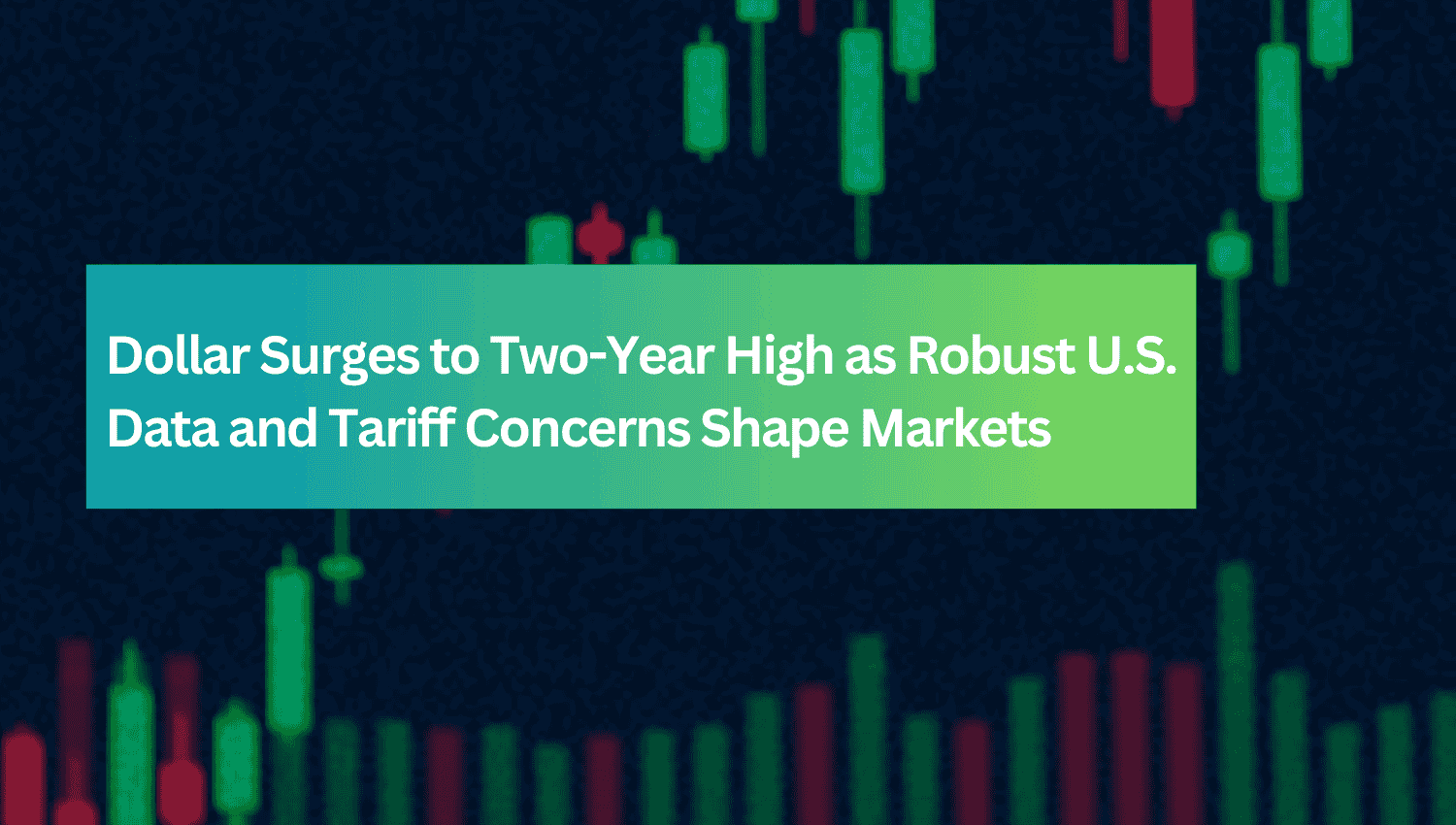Market Drivers: Dollar Strengthens on Solid U.S. Data and Tariff Speculation

The U.S. dollar index climbed to a two-year high on the first trading day of 2025, fueled by robust economic data and concerns about potential U.S. tariff policies under President Donald Trump. Weekly jobless claims dropped to an eight-month low, reinforcing confidence in the U.S. labor market and boosting the greenback. In Europe, disappointing PMI reports pressured both the euro and the pound. Eurozone manufacturing activity remained in contraction, with new orders hitting a three-month low, while British factory activity shrank at its fastest pace in nearly a year, casting doubt on the Bank of England’s ability to hold rates steady.
Commodity-linked currencies showed mixed performance, with the Australian dollar gaining slightly on rising gold and natural gas prices, while the yen weakened against the dollar amid muted risk sentiment. Oil prices surged 2%, driven by speculation over U.S. offshore drilling constraints and potential Saudi price hikes for Asian buyers in February. Treasury yields edged lower, reflecting cautious sentiment despite strong economic data.
Market Outlook: Dollar Dominance and Persistent Regional Risks
- Dollar: Likely to maintain its strength in the near term, supported by solid labor market data, fiscal policy expectations, and safe-haven demand amid global uncertainties.
- Euro: Faces continued downside risks unless eurozone economic data improves significantly, with weak PMIs highlighting ongoing challenges.
- Pound: The outlook remains bearish amid poor UK factory data, with limited upside potential unless upcoming data or BOE guidance shifts sentiment.
- Commodity-Linked Currencies: Australian dollar may find support from rising commodity prices but remains capped by dollar strength and broader risk sentiment.
- Oil and Gold: Oil may remain buoyant on speculation of supply constraints, while gold’s safe-haven appeal is likely to persist amid geopolitical and economic uncertainties.
Currency Market Summary: Dollar Leads, Euro and Pound Struggle
- EUR/USD: Fell 0.94%, pressured by weak eurozone PMIs and thin market liquidity. Option-related selling near the 1.03 level amplified losses, though technical support limited further declines.
- USD/JPY: Gained 0.32%, reflecting yen weakness amid dollar strength and slightly lower Treasury yields.
- GBP/USD: Dropped 1.25%, weighed by poor UK manufacturing data and concerns over BOE policy direction.
- AUD/USD: Rose 0.10%, supported by rising gold and natural gas prices, though capped by overall dollar strength.
- Cross-Currency Pairs: EUR/JPY and GBP/JPY fell 0.57% and 0.80%, respectively, while AUD/JPY climbed 0.48% as commodity gains bolstered risk sentiment.
Currency Outlook: Dollar Expected to Stay Resilient Amid Economic and Geopolitical Factors
- Dollar: Poised to remain strong, supported by solid U.S. fundamentals and safe-haven flows, though any signs of dovish Fed signals could temper gains.
- Euro: Faces downside risks unless eurozone sentiment improves or data surprises positively, with technical support around 1.03 acting as a key level.
- Pound: Likely to stay under pressure unless UK data improves or the BOE signals a more supportive stance, with the bearish trajectory intact.
- Yen: Could remain weak amid U.S. yield differentials, though geopolitical risks and BOJ commentary may provide intermittent support.
- Commodity-Linked Currencies: Australian and New Zealand dollars may see gains if commodity prices stay elevated, though they remain vulnerable to global risk sentiment and dollar strength.
Conclusion: Volatility Ahead as Central Bank and Fiscal Policies Take Center Stage
As markets navigate the early days of 2025, the dollar’s strength is expected to dominate amid robust U.S. data and geopolitical uncertainties. The euro and pound face challenges from weak regional data, while the yen and commodity-linked currencies grapple with global risk sentiment and diverging monetary policies. Oil and gold remain in focus as energy markets react to supply dynamics and investors seek safe-haven assets. Heightened volatility is anticipated as economic data and central bank decisions shape the year’s early trends.

